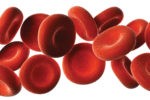Cancer Pain

Relief Can Be Found
You have cancer.” It is a sentence that none of us wish to ever hear from our physician. Having the disease is traumatic enough, but when you have severe pain as well, it can be debilitating and hard to manage.
Not everyone with cancer has cancer pain, but some do. If you have cancer that has spread or recurred, your chance of having pain is higher.
Cancer pain takes many forms. It can be dull, achy, sharp or burning. It can be constant, intermittent, mild, moderate or severe. How much pain you feel depends on a number of factors, including the type of cancer you have, how advanced it is, where it’s situated and your pain tolerance.
Keep in mind that most cancer pain is manageable and that controlling your pain is essential to your treatment.
Dr. William S. Rosenberg, a Neurosurgeon and Founder at the Center for the Relief of Pain Midwest Neuroscience Institute of Kansas City, President and Founder of Cancer Pain Research Consortium, offers some insight into cancer pain, the different treatment approaches available and how you can help your doctor understand your pain.

What causes cancer pain?
If the pain is from the cancer itself, it can be from the cancer growing into or destroying nearby tissue. “As a tumor grows, it can press on nerves, bones or organs. The tumor can also release chemicals that can cause pain. Or your body’s reaction to the chemicals can cause pain,” explains Dr. Rosenberg. “The issue is that it is a very common problem and unrecognized and untreated.”
Treatment of the cancer can help the pain in these situations. However, cancer treatments, including surgery, radiation and chemotherapy, also can cause pain.
How Do You Treat Cancer Pain?
There are a variety of ways. One is to remove the source of the pain through surgery, chemotherapy, radiation or other treatment. If that can’t be done, pain medications can usually control the pain. These medications include:
• Over-the-counter and prescription pain relievers, such as aspirin, acetaminophen (Tylenol, others) and ibuprofen (Advil, Motrin IB, others)
• Physical Therapy
• Strong opioid medications, such as morphine (Kadian, Ms Contin, others), oxycodone (Oxycontin, Roxicodone, others), hydromorphone (Dilaudid, Exalgo), fentanyl (Actiq, Fentora, others), methadone (Dolophine, Methadose) or oxymorphone (Opana)
Some medications come in tablets or liquids you swallow; others dissolve quickly in your mouth. You can receive some medications by shots, either under the skin or in a vein; through rectal suppositories; or by wearing a skin patch.
Other medications used to treat cancer pain are antidepressants, anti-seizure drugs and steroids.
“Some of the specialty treatments we do are things like identifying the pain fibers in the spinal cord and turn them off. This treatment, known as Myelotomy, is either a minimally invasive, percutaneous procedure or a small open surgery on the spine that is used to address pain in the abdomen or pelvis,” Dr. Rosenberg goes on. “Most often, myelotomy is used for cancer-related pain from the abdominal organs (liver, pancreas, kidneys, ovaries, uterus) or involving the pelvis or sacrum. Under certain circumstances, it can be used for pain that is not caused by cancer.”
Other Treatments Include:
Nerve blocks: With a nerve block, a local anesthetic, usually with steroids, is injected around the nerve that travels to the painful area. The drugs stop the nerve from sending pain signals to the brain. The doctor will inject a small amount of a local anesthetic to numb the skin so there will be no pain where the needle is injected. Imaging helps the doctor insert the needle precisely. Before the nerve block procedure starts, a sedative may be given to help the patient become calm and relaxed, but oftentimes this is not required.
Ablative (removing of body tissue) procedures: Ablative procedures kill painful tumor cells and can also be done with percutaneous techniques. With these procedures, heat, cold or a chemical solution is delivered through a thin needle to kill tumor cells causing bone pain, with the spine and the pelvis being the most common locations. Ablation with heat is radiofrequency ablation, or RFA; ablation with cold is cryoablation. Chemicals injected for ablation include highly concentrated alcohol or phenol.
Vertebroplasty/kyphoplasty or cementoplasty: Vertebroplasty, with or without kyphoplasty provides pain relief for most patients with cancer who have compression fracture of the spine. Often, back pain is relieved in just hours after the procedure. Cementoplasty involves putting cement in other bones fractured from cancer mostly in the pelvic bones for pain relief and fracture stabilization. The risk of complications is low, and patients usually go home the same day.
Radiosurgical hypophysectomy: A non-invasive procedure, using radiation, to treat cancer-related pain. It can be effective for any kind of pain but is especially useful for bone pain. It is used for diffuse bone pain caused by tumors. It may also be good for other kinds of pain as well, like after a stroke.
Cingulotomy: A minimally invasive brain procedure performed with computer navigation through two small incisions on each side of the head. It is usually used to treat severe cancer-related pain.
“Some of the challenges we are seeing right now with cancer pain, is simply getting access to the patient,” Dr. Rosenberg goes on. “Communication to the providers to know that we exist and to coordinate with us. Providers and hospices are well meaning and give them some meds from the pain, but really don’t educate them on the various ways they can treat it.”

MYTH VS FACT: Cancer Pain and its Treatment
MYTH: Increasing pain means that my disease is getting worse.
FACT: Pain and severity of disease are not necessarily related, but increasing pain should prompt a conversation with your doctor to evaluate the cause and develop a plan for more acceptable pain relief.
MYTH: I don’t want to have unpleasant side effects from pain medications.
FACT: Side effects may occur with some pain medications, but they can be managed and some will decrease or disappear over time on their own. If you become tolerant to your medications or the side effects are too difficult, a health care provider with expertise in cancer pain can help guide you through other options.
MYTH: If I take narcotics (opioids) regularly, I may become addicted.
FACT: Although people can become tolerant to a pain medication (meaning more doses are required to have the same effect), tolerance is not the same as addiction. Addiction is a specific diagnosis in which people act in risky or abnormal ways to get drugs. People with cancer who take pain medications as directed usually don’t become addicted.
MYTH: If I start taking pain medication early on, I will run out of options for pain relief in the future.
FACT: Many pain-relieving medications and procedures are available. More options are available if pain becomes more severe.
How Can You Help Your Doctor Understand Your Cancer Pain?
If the pain interferes with your life or is persistent, report it. It might help to keep track of your pain by jotting down:
• How severe the pain is
• What type of pain (stabbing, dull, achy) you have
• Where you feel the pain
• What brings the pain on
• What makes the pain worse or better
• What pain relief measures you use — such as medication, massage, and hot or cold packs — how they help and any side effects they cause
• Using a pain-rating scale from 0 to 10 — with 0 being no pain and 10 being the worst pain imaginable — might help you to report your pain to your doctor.
For more information on Dr. William S. Rosenberg, contact the Center for the Relief of Pain at 816-363-2500.
SOURCES: Dr. William S. Rosenberg, PatientResource.com, American Cancer Society: www.cancer.org Cancer-related Pain American Society of Clinical Oncology: www.cancer.net/navigating-cancer-care/sideeffects Pain: Causes and Diagnosis American Society of Regional Anesthesia and Pain Medicine: www.asra.com Treatment Options for Chronic Pain Cancer-Pain.org: www.cancer-pain.org Cancer Pain Research Consortium: www.cancerpainresearchconsortium.org National Cancer Institute: www.cancer.gov Pain Control: Support for People with Cancer





